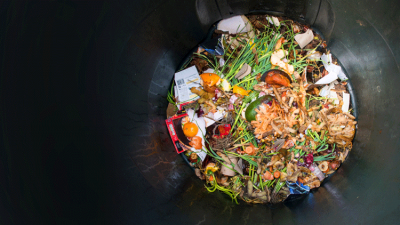Guest technology editor
Tackling food waste through bin tech

Take next month’s food purchasing budget, now put 20% of it straight into the bin. Madness, right? It’s being reported that restaurant and commercial kitchens are throwing away up to a fifth of the ingredients they buy, despite much of the waste not actually being waste at all. Making chefs more aware of what they discard will be a crucial part of emerging cost-control strategies for the kitchens of the future, with technology being key to this process, as hospitality continues to feel the pinch on resources.
Waste and recycling body Wrap estimates the UK is binning around £13bn of perfectly good food every year. The UK hospitality industry was reported to have lost £2.4bn in food waste in 2016, with £682m of that slipping through restaurant owners’ fingers. Consultant Food Alert calculates that, if a 180-litre wheelie bin is filled with food waste every week, and each load is worth £200, that amounts to almost £10,500 a year. So what’s the solution to controlling what gets thrown away while also salvaging wasted profits?
The answer could very well be in the bin.
We have smartphones for reservations and ordering, digitally integrated EPoS networks and automated kitchen display systems. It seems an obvious next step to me to continue that technical connection right to the end. However, according to current figures, no more than 10% of commercial kitchens have a smart bin system. It’s thought operators consider them too costly to install, but if 20% of restaurant cash is effectively being thrown away, digital bins would be a smart investment.
The bins work by chefs weighing what food they put in each time and logging the contents in a digital system, which produces food waste reports. Early adopters are singing the praises of the technology, saying it’s only a matter of changing habits in the kitchen and weigh-as-you-throw soon becomes second nature. When head chefs can see from the reports exactly what’s being discarded, the bigger picture really becomes clear, and new uses for previously unwanted ingredients can readily be found.
All manner of trimmings that don’t suit one dish can be re-deployed in another – puréed into sauces for example, added to soups, or made into fillings. Fans of the system say entirely new menu items have been created from what was once considered waste. Recycling ingredients using modern technology not only maximises the operator’s budget, it also ups the brand’s green credentials: for today’s increasingly eco-conscious consumer, choosing a restaurant with vastly reduced landfill liabilities ticks an important box.
Waste not want not, they say. We’ve improved efficiencies back of house, as well as in waiting staff time, with tablet-based menus and order-taking, call button systems linking customers to front of house and on to the kitchen, all to provide the most efficient service and ensure meals arrive at the table hot and fresh. The goal is to avoid wastage of the dishes sent out. Surely it’s time to consider what happens to raw ingredients too, and pull those profits back out of the bin.
































